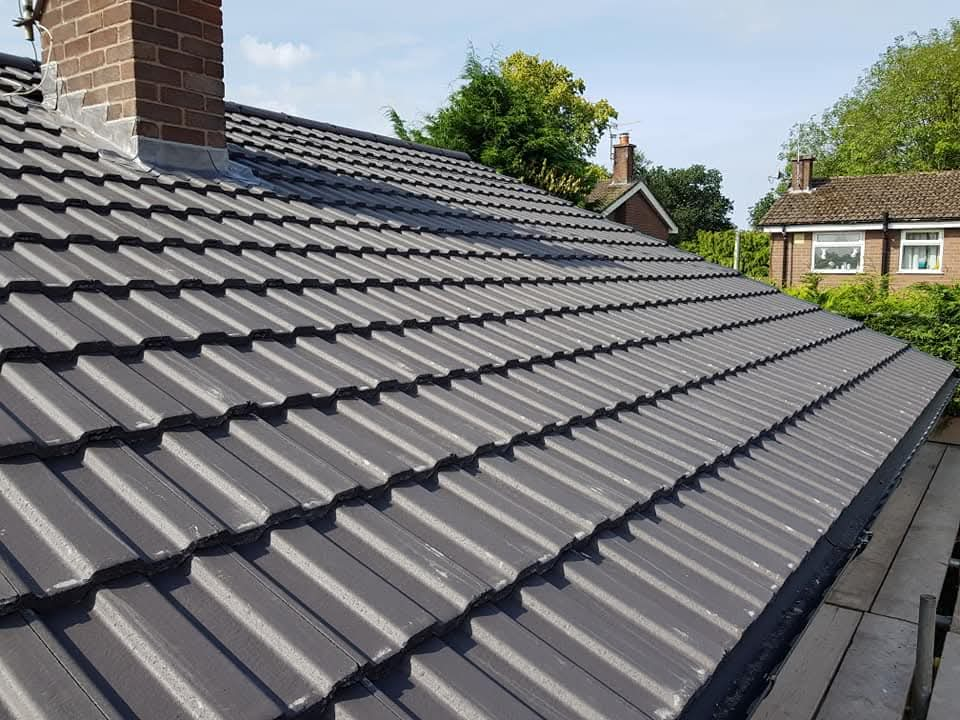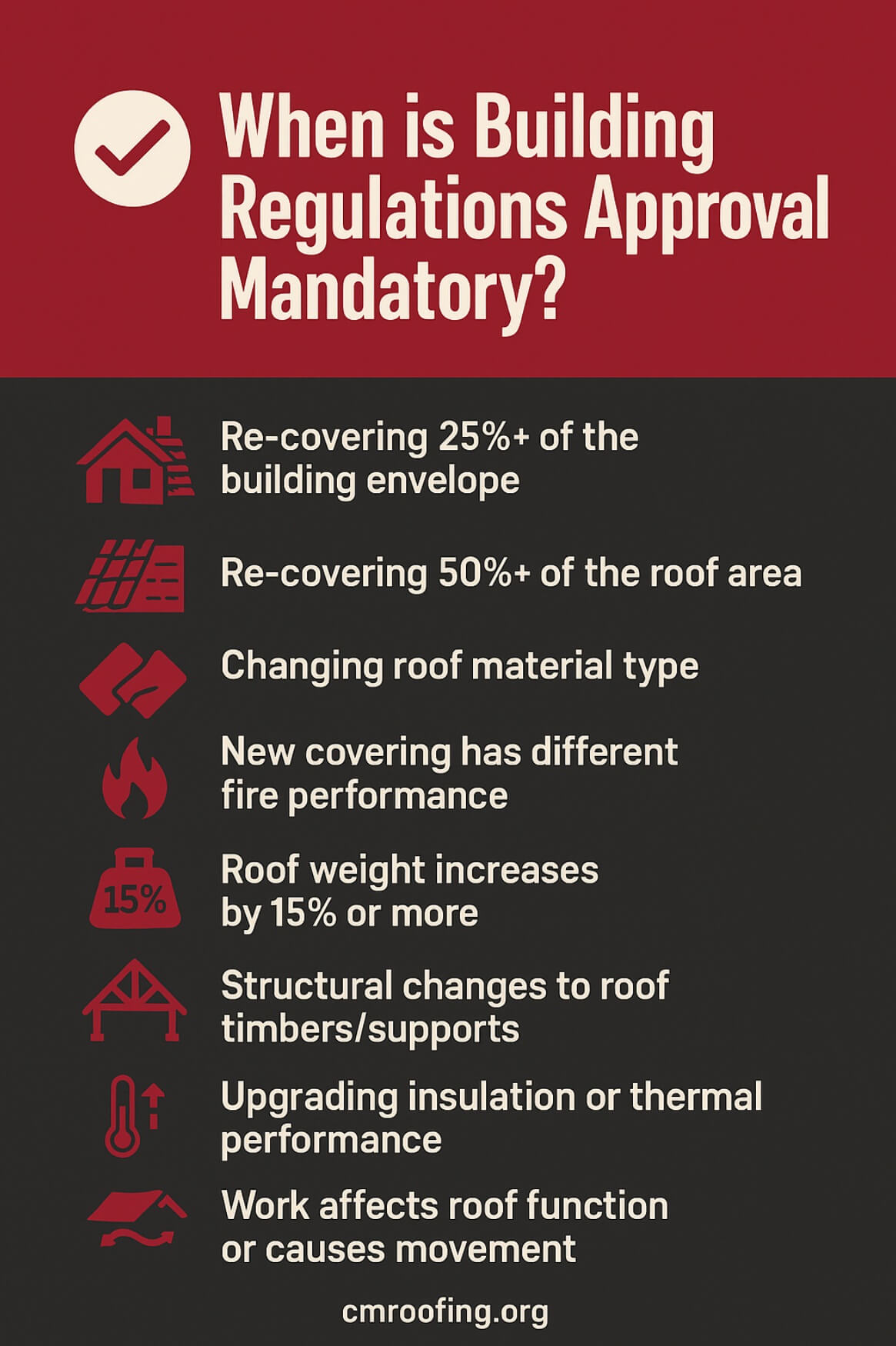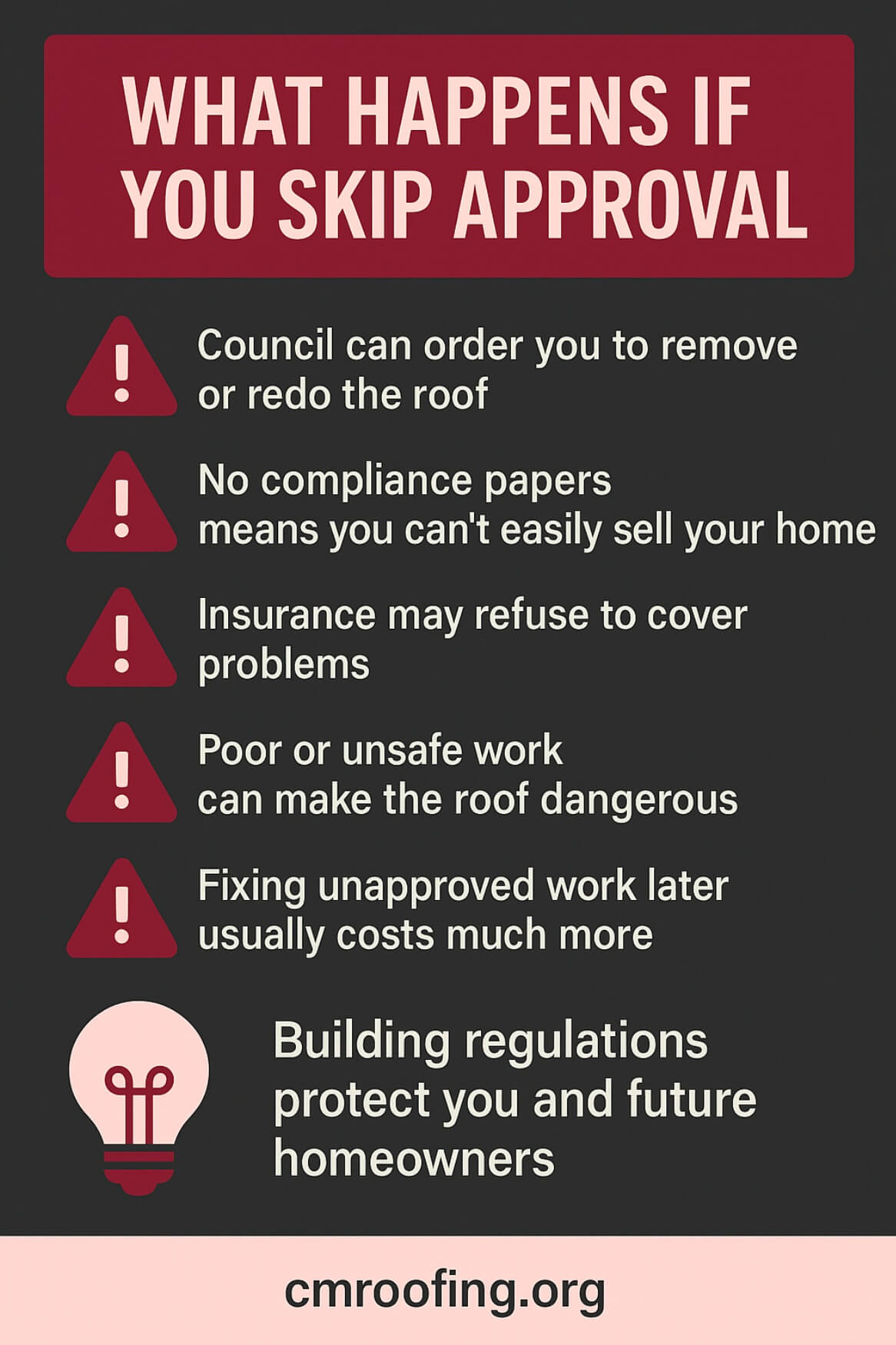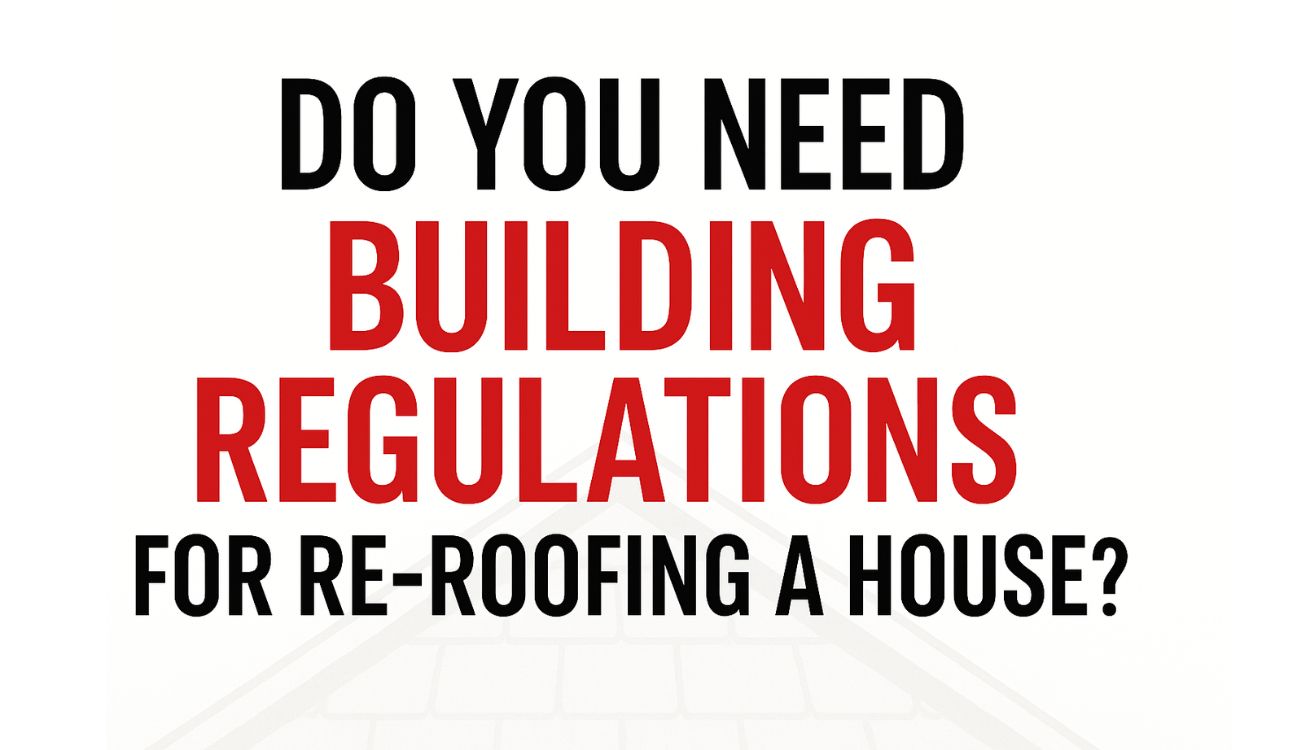Quick Answer: In the UK, building regulations approval is required for re-roofing if the work covers more than 25% of the building envelope or 50% of the roof area. Minor repairs and like-for-like replacements below these thresholds are typically exempt, but always check with your local authority.

Not all roof work requires official paperwork. That’s good news for many homeowners. But knowing exactly when you need building regulations approval for roof repairs or replacement can save you time, money and legal headaches.
Let’s clear up the confusion around roofing regulations in the UK. The rules aren’t as complicated as they might first appear.
Key Takeaways
- Building regulations approval is mandatory for re-roofing that exceeds 25% of the building envelope or 50% of the roof area.
- While minor repairs and maintenance don’t require approval, non-compliance can invalidate home insurance and cause problems when selling your property.
- Professional roofers can self-certify compliance, saving you time and paperwork with local authorities.
Do You Need Building Regulations for Roof Repairs?
When your roof needs attention, the level of work determines whether you need official approval. Building Regulations exist to ensure your home remains structurally sound, energy efficient and safe.
The Planning Portal, the UK government’s official planning website, makes clear distinctions between work that requires approval and work that doesn’t. Simply put, minor repairs typically don’t need approval, while significant re-roofing projects do.
Building Regulations differ from Planning Permission. Building Regulations focus on how the work is done and technical standards. Planning Permission relates to how your home looks and impacts the surrounding area.
Most standard re-roofing work requires Building Regulations approval, but not Planning Permission. This distinction matters because applying for the wrong permission wastes time and money.
Understand Your Roof Structure
The typical pitched roof includes elements such as:
| Roof Component | Function |
|---|---|
| Ridge Board | Forms the apex of the roof where rafters connect |
| Rafters | Create the main pitch and support tiles and battens |
| Purlins | Long timbers that reduce the unsupported length of rafters |
| Struts | Support purlins, connecting them to load-bearing walls |
| Ties | Prevent roof spreading, often forming A-frame shapes |
Flat roofs are simpler, generally consisting of joists spanning between walls, covered by panels and waterproof coverings like felt.
Building regulations exist to ensure any work on these elements doesn’t compromise your roof’s structural integrity or safety.
When Is Building Regulations Approval Required?
Building regulations approval becomes mandatory in several specific scenarios. Knowing these requirements can save you from costly mistakes and legal complications.

These requirements apply to both pitched and flat roofs. For example, if you’re planning to replace all the tiles on your roof, this would likely exceed the 50% threshold, requiring approval.
Similarly, if you’re upgrading insulation while re-roofing to improve energy efficiency, you’ll need to ensure the work complies with current thermal standards.
The 25% and 50% thresholds are particularly important to understand. The “building envelope” refers to the entire external surface of your home, including walls, windows, and roof. Even if you’re only working on a portion of your roof, you need to calculate what percentage of the total building envelope this represents.
Are There Any Exemptions?
Yes, certain roofing works are exempt from building regulations approval, saving you time and paperwork.
You generally don’t need building regulations approval for:
- Like-for-like repairs covering less than 25% of the building envelope and less than 50% of the roof
- Minor repairs that don’t alter the structure, insulation, or fire safety characteristics
- Simple maintenance work, such as replacing a small number of damaged tiles or slats
- Repairs to flashings or guttering that don’t involve significant changes to the roof
For example, if your roof has a few damaged tiles after a storm, replacing these individual tiles wouldn’t require approval. Similarly, repairing a small section of damaged felt on a flat roof typically falls outside the scope of building regulations.
However, these exemptions come with important caveats. Even “minor” work must be carried out to a professional standard to ensure it doesn’t create problems. Poor quality repairs, even on a small scale, can lead to water ingress and structural damage over time.
Special considerations apply to certain properties. If your home is listed or in a conservation area, additional rules may apply regardless of the scale of work. Similarly, if protected species like bats have roosts in your roof space, you’ll need to consider wildlife protection laws before undertaking any work.
It’s worth noting that even exempt work must still be completed to appropriate standards. Just because you don’t need formal approval doesn’t mean you can cut corners on quality or safety.
Risks of Ignoring Building Regulations
Proceeding with roofing work without the required building regulations approval carries significant risks that extend beyond immediate legal consequences.
If you complete work without the necessary approval, your local authority can take enforcement action. This might include issuing a notice requiring you to remove or correct non-compliant work. Imagine having to tear off a newly installed roof because it doesn’t meet regulations!
When selling your property, solicitors conduct searches that include checking for building regulations compliance. Discovering unauthorised work can delay or even derail property sales, as buyers may be reluctant to take on the liability of non-compliant structures.
Your home insurance could be invalidated if you’ve made significant changes without obtaining the required approvals. This means you might not be covered if problems arise from the unauthorised work.
Beyond legal and financial implications, non-compliant roofing work can create genuine safety hazards. Inadequate structural support can lead to roof collapse, while poor ventilation can cause condensation, dampness, and eventually rot in roof timbers.

How to Stay Compliant With Roof Work
Ensuring your roofing project complies with building regulations is straightforward if you follow the right steps.
Your first option is to contact your local authority building control team. They can provide specific guidance for your project and will ultimately be responsible for inspecting and approving the work. Most local authorities have dedicated building control departments that can advise on your specific circumstances.
Alternatively, you can discuss compliance responsibilities directly with us. Our professional roofing services are fully up to date with building regulations requirements, and we can guide you through the process.
Conclusion
When it comes to re-roofing your house, it’s always better to check if building regulations approval is needed rather than risk costly remedial work later. Professional roofing contractors can guide you through the compliance process and ensure your new roof is safe, efficient, and legally sound. So, contact our team today for expert advice on your specific roofing project.
FAQs
Do I need Building Regulations for replacing just a few roof tiles?
No, replacing a small number of damaged tiles is considered minor repair work and doesn’t typically require building regulations approval.
What happens if I re-roof without the required approval?
Your local authority can require you to remove or rectify non-compliant work. You may also face difficulties selling your property and potential insurance issues.
Is planning permission the same as Building Regulations?
No, they’re separate systems. Planning permission concerns how your building looks and its impact on the surroundings, while Building Regulations focus on technical standards and safety.
Do I need approval if I’m only repairing part of the roof?
If you’re repairing less than 25% of the building envelope and less than 50% of the roof area, you typically don’t need approval unless you’re changing materials or affecting the structure.
What about work on terraced houses and party walls?
For terraced properties, roof work near shared walls may require a Party Wall Notice under the Party Wall Act 1996, giving neighbours two months’ notice before work begins.


